Babies!
I was recently informed on Facebook (if that’s even possible) that young birds are called chicks and not babies. Someone responded with ‘cygnets’. I think goslings or ducklings would have been suitable answers too.
Chicks can be precocial, in which case they can leave the nest and wander and feed themselves, like cygnets, or they can be altricial, in which case they are tiny, featherless and have their eyes closed. All songbirds are altricial. It’s a long journey to independence and safety for them.
When I spotted a Song Thrushes’ nest, uncovered by irresponsible work at this time of year on a railway bridge, the chicks were well grown but still not ready to fledge. Here’s the damage:
I went back the day after seeing the destruction of their nesting site to find this:

Nothing. All the chicks had gone and the nest didn’t look quite the same. My fear is that predators got to it before they had time to fledge. It’s a perilous life.
I’ve spent the last week following a Long-Tailed Bushtit’s nest. Having said that, I’ve never seen the nest. It’s buried in brambles and utterly impenetrable, except to a crow or magpie. Will they survive? Or will they fall victim to human interference or predators or both?
I walk towards the nest and find there’s no activity. The hustle and bustle of the week has gone. There’s nothing here. There are no contact calls in the trees, no nervous flights to perches overlooking the nest. No desperate dashes to cover with a succession of caterpillars. Nothing.
They’ve fledged today and I’ve missed it. I’m disgruntled and disconsolate. I meander without purpose for a few hours taking photographs of anything which comes my way, which is precious little. It’s time to go home now and instead I take the third of the three ways to the crossroads next to the nest, and not the one which leads home.
Then I hear it. The familiar sound of Long-Tailed Bushtits. They’re here. I look up, searching for them and spot this on a branch overhead:
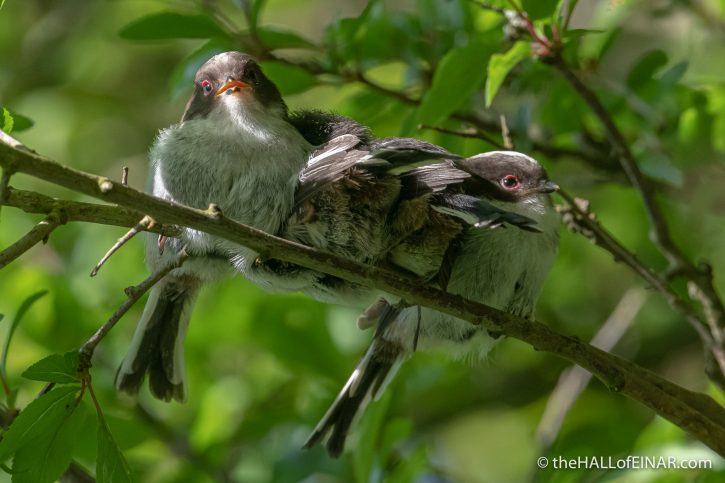
There are four of them. They are insanely cute. I almost cry.
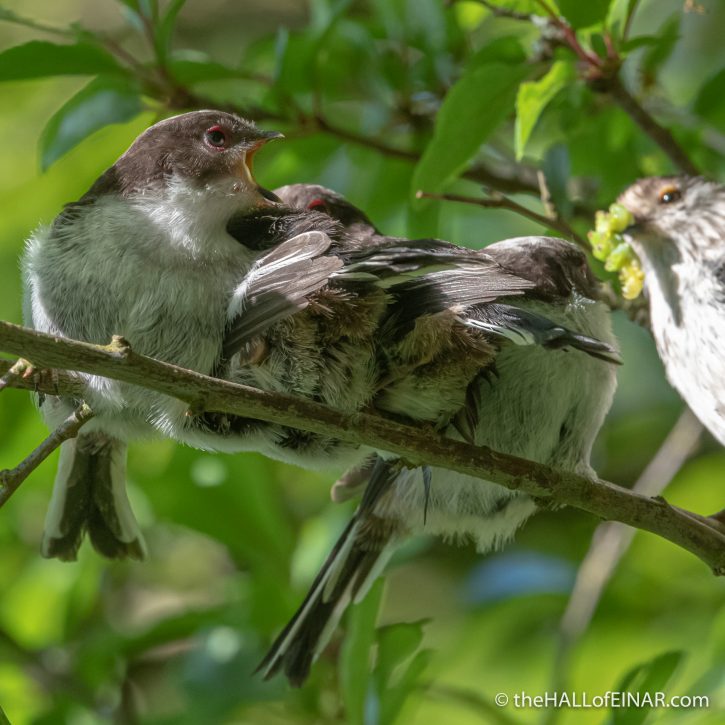
There are two facing my way and two sandwiched in the middle with their bottoms towards me. One of the adults arrives with a green caterpillar.
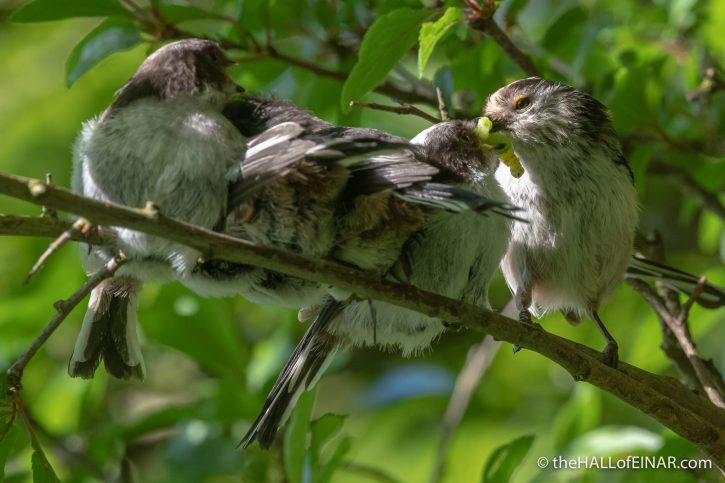
I love how disappointed the one on the left is at not getting fed. It’s craning its neck and gaping desperately. Caterpillar does look tasty, if you’re a Long-Tailed Bushtit.
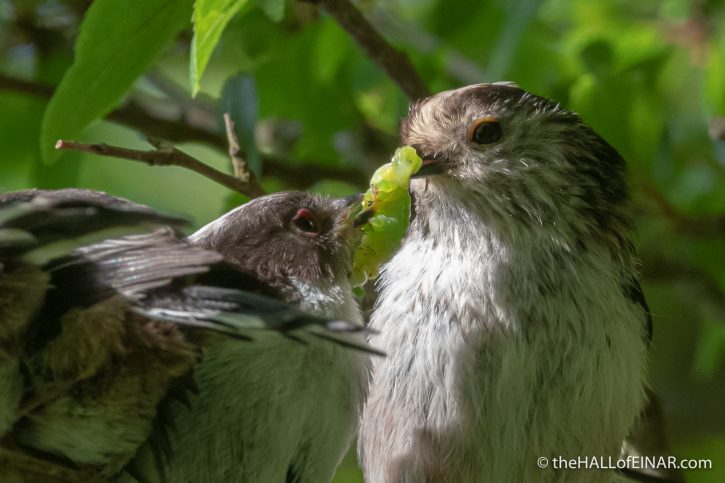
Then normality resumes.
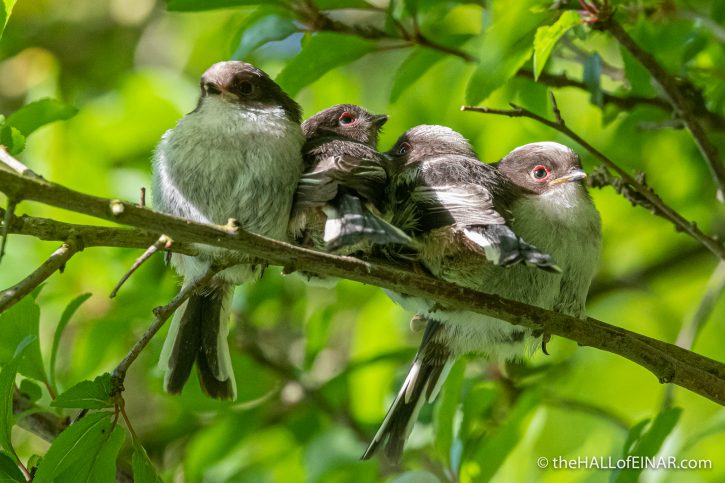
I spot another two of them higher up. There are six chicks. Excellent. Everything is calm until there’s the possibility of another caterpillar:

There are Magpies about and this adult is still on high alert.
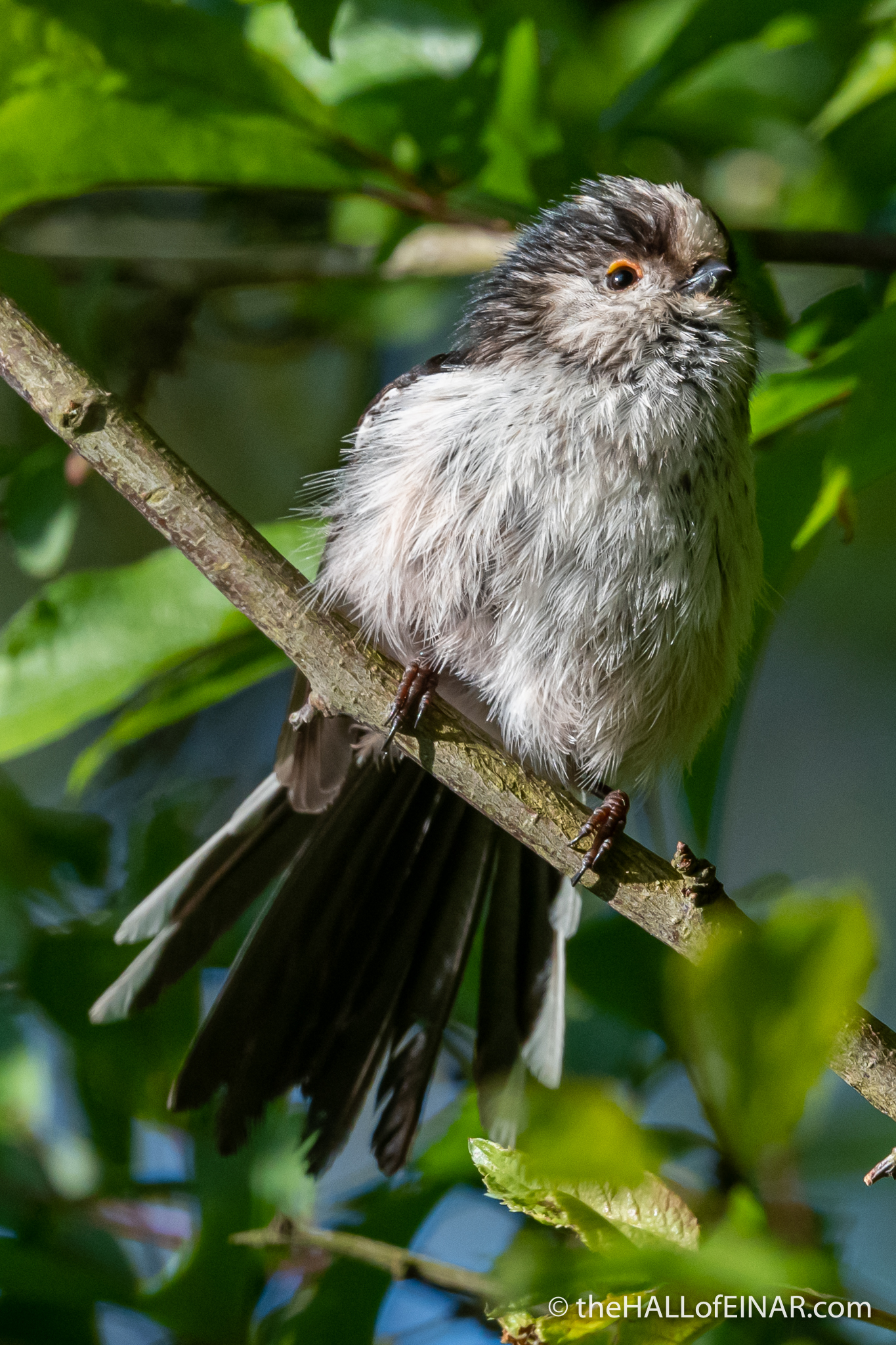
If anyone thought that the fledglings leaving the nest would be the end of the pressure, they were mistaken; speaking as a man whose children have all left home.

And finally, the face that kills me.
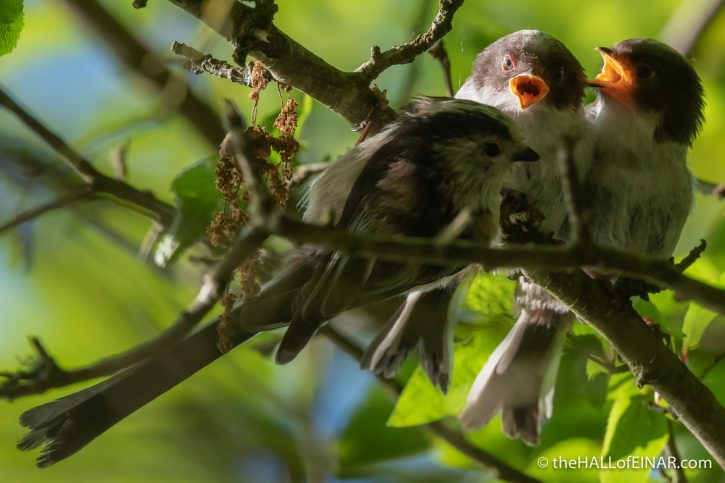
It’s been a pleasure to follow the caterpillar delivery service. I hope you’ve enjoyed watching their adventures with me. Long-Tailed Bushtits live an average of two years and only ever have one brood a year, so that’s it for their attempt to have babies for this year or maybe ever.
And yes, I did say babies.
More Long-Tailed Bushtits
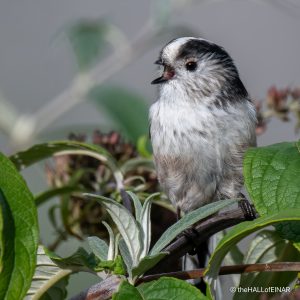 Bumbarrels I can hear the Bumbarrels calling. There's a distinctive contact call which they use as family groups move from tree… read more
Bumbarrels I can hear the Bumbarrels calling. There's a distinctive contact call which they use as family groups move from tree… read more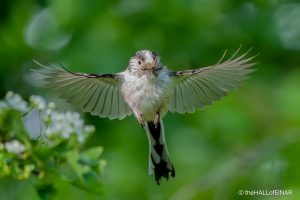 The eggs have hatched Last year I was disappointed when the two Long-Tailed Tits nests I found were also found by predators. That meant… read more
The eggs have hatched Last year I was disappointed when the two Long-Tailed Tits nests I found were also found by predators. That meant… read more Fuzzy pink lollipops Long-Tailed Tits are one of our most loved garden birds. They are tiny, busy, social visitors to urban gardens and… read more
Fuzzy pink lollipops Long-Tailed Tits are one of our most loved garden birds. They are tiny, busy, social visitors to urban gardens and… read more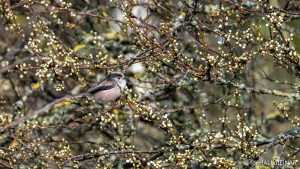 Long-Tailed Bushtits in blossom The Long-Tailed Bushtits are still trailing in large caravans across the countryside, making desperate dashes between cover in family groups.… read more
Long-Tailed Bushtits in blossom The Long-Tailed Bushtits are still trailing in large caravans across the countryside, making desperate dashes between cover in family groups.… read more Bumbarrels on parade There's a small group of Long-Tailed Bushtits calling overhead. They're vibrating a 'Tseee-Tseee' call amongst the empty branches as they… read more
Bumbarrels on parade There's a small group of Long-Tailed Bushtits calling overhead. They're vibrating a 'Tseee-Tseee' call amongst the empty branches as they… read more 2020 highlights of a wilder Devon life 2020 is a year which will be difficult to forget for those of us lucky enough to still be alive.… read more
2020 highlights of a wilder Devon life 2020 is a year which will be difficult to forget for those of us lucky enough to still be alive.… read more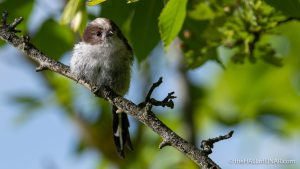 Return to the Long-Tailed Bushtits You may have read my blogs about the Long-Tailed Bushtit family which took up a week of my life. Once… read more
Return to the Long-Tailed Bushtits You may have read my blogs about the Long-Tailed Bushtit family which took up a week of my life. Once… read more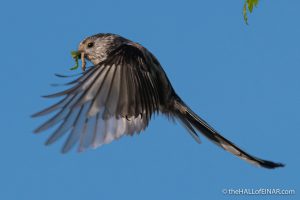 The Caterpillar Service – Day Eight I only have a snatched hour with the Long-Tailed Bushtits today. I still get some lovely views. I've been trying… read more
The Caterpillar Service – Day Eight I only have a snatched hour with the Long-Tailed Bushtits today. I still get some lovely views. I've been trying… read more